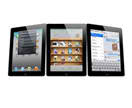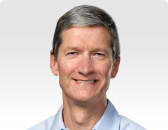The importance of online resources during crises
In waking up to news of heartbreaking disasters, most of the world now turn to online resources and tools to get real time updates and absorb on-the-ground situations.
The web paves the way for ordinary citizens to report relevant information through online channels.Uploaded videos & photos showing the conditions of affected areas are used as online resources by organizations such as rescue teams & government agencies.
According to a blogpost of Google.org, the philanthropic arm of Google, online resources are also the most efficient service during these disasters. This underscores the significance of online activity.
The blog said that, "While in some cases internet access is restricted due to infrastructure failures, generally, Internet Service Providers continue to provide connectivity and users take advantage of it. The findings show just how resilient the internet can be in times of crises compared to other infrastructure."
Given this knowledge, fully-charged laptops and devices which have access to the internet should be part of measures for unfortunate events that will hamper our ability to communicate with the rest of the world. In the Philippines, strong typhoons are immediately followed by long power outages. Oftentimes, laptops and mobile phones are the only means of getting updated on current events - demonstrating again how invaluable the Internet is when calamities are projected to occur more times than the recent decades.
Enter Google Crisis Response
Google Crisis Response is a team within Google.org that seeks to make critical information more accessible around natural disasters and humanitarian crises. It assesses the scale and scope of each disaster to determine whether and how it can uniquely contribute tools or content to relief efforts.
According to wikipedia, "It provides engineering tools that enhance communication and collaboration among crisis responders and victims. Such online tools include Person Finder, Google Maps, Google Earth, Google Fusion Tables, Google Docs, and Google Sites.
Upon activation of Google Crisis response, communities and citizens are given a powerful online venue that provides a variety of options to help the disaster-stricken area in real time.
Google's Person Finder
When Japan was hit by a massive Earthquake and Tsunami last March 2011 that wreaked havoc and killed scores of people, relatives who have family members living in the affected wanted to immediately find out if the latter survived the disaster.
Rie Kawai, a Japanese living in the United States and Aki Kohata, Rie's cousin living in Japan, communicated about their missing grandfather through Google Person Finder, one of the vital online resource tools of Google's Crisis Response.
Rie found out through Google Person Finder that her grandfather survived the onslaught as showed in Google.org's YouTube video.
Google Person Finder is described in the website of Google.org as "an important tool that helps with the process of reconnecting people in the wake of major disasters by providing an open platform for individuals and organizations to let people know who they’re looking for and to enter updates about missing persons."
 |
| The Google Crisis Response Japan page |
 |
| Google Crisis Response entry page |
Problem Solvers
From a small team that formed to help victims of Hurricane Katrina in 2005, the Google Crisis Response team is progressively scaling its tools and resources. It has constantly responded to the disasters that struck the world. For 2011, it was an Internet lifeline for such events as the Turkey Earthquake, Australian Floods & Thailand Floods.
Here in the Philippines, Google established a Crisis Map and Person Finder for the recent Typhoon Sendong. This typhoon has currently claimed 1,500 lives. The Crisis map below displays information about the typhoon-affected areas for which the Google Crisis Response team has collected geographic information, such as the location of shelters and hospitals. The YouTube logo on the Crisis Map screen, when clicked, will display videos related to the crisis. The data comes from a variety of sources, including official information sources and user-generated content.
 |
| Typhoon Sendong Crisis Map |
 |
| Person Finder for Typhoon Sendong |
 |
| Person Finder Data entry point for Typhoon Sendong |
Institutionalizing online aid
By enabling citizens to share information about disaster-stricken areas from any location through online collaboration is a great service to humanity. The actions taken by Google and other organizations in past disasters have enabled the Internet to be a huge helping hand that facilitates more timely responses and better communication in tough situations.
Like its other technologies, Google is constantly improving its Crisis Response as lessons from past efforts are incorporated. God forbid the need to activate it again, we will see this technology evolve into a more responsive and organized effort.
The Google Crisis Response is a very valuable program being fostered online by Google. It is one of the organizations that can significantly reach a critical mass and mobilize it to participate in humanitarian efforts through technology.
Like its other technologies, Google is constantly improving its Crisis Response as lessons from past efforts are incorporated. God forbid the need to activate it again, we will see this technology evolve into a more responsive and organized effort.
The Google Crisis Response is a very valuable program being fostered online by Google. It is one of the organizations that can significantly reach a critical mass and mobilize it to participate in humanitarian efforts through technology.































